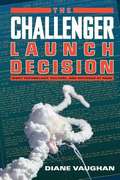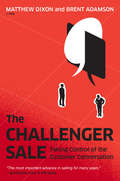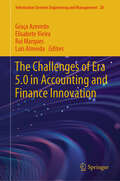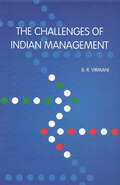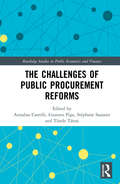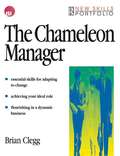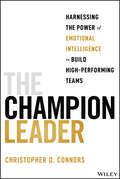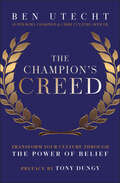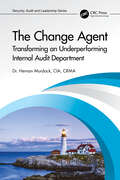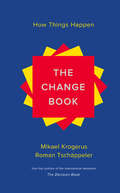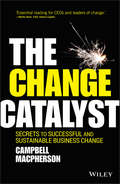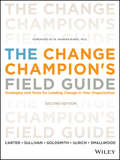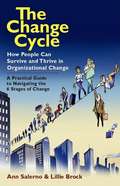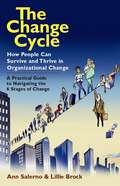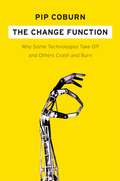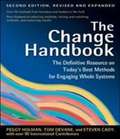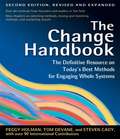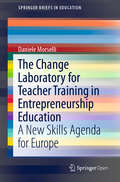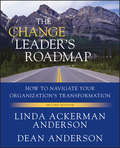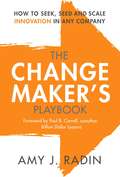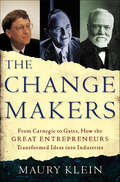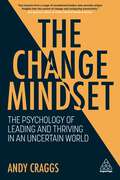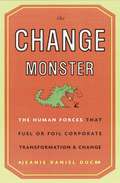- Table View
- List View
The Challenger Launch Decision: Risky Technology, Culture, and Deviance at NASA
by Diane VaughanWhen the Space Shuttle Challenger exploded on January 28, 1986, millions of Americans became bound together in a single, historic moment. Many still vividly remember exactly where they were and what they were doing when they heard about the tragedy. In The Challenger Launch Decision, Diane Vaughan recreates the steps leading up to that fateful decision, contradicting conventional interpretations to prove that what occurred at NASA was not skulduggery or misconduct but a disastrous mistake. Journalists and investigators have historically cited production problems and managerial wrong-doing as the reasons behind the disaster. The Presidential Commission uncovered a flawed decision-making process at the space agency as well, citing a well-documented history of problems with the O-ring and a dramatic last-minute protest by engineers over the Solid Rocket Boosters as evidence of managerial neglect. Why did NASA managers, who not only had all the information prior to the launch but also were warned against it, decide to proceed? In retelling how the decision unfolded through the eyes of the managers and the engineers, Vaughan uncovers an incremental descent into poor judgment, supported by a culture of high-risk technology. She reveals how and why NASA insiders, when repeatedly faced with evidence that something was wrong, normalized the deviance so that it became acceptable to them. No safety rules were broken. No single individual was at fault. Instead, the cause of the disaster is a story not of evil but of the banality of organizational life. This powerful work explains why the Challenger tragedy must be reexamined and offers an unexpected warning about the hidden hazards of living in this technological age.
The Challenger Sale: Taking Control of the Customer Conversation
by Matthew Dixon Brent AdamsonWhat's the secret to sales success? If you're like most business leaders, you'd say it's fundamentally about relationships-and you'd be wrong. The best salespeople don't just build relationships with customers. They challenge them. The need to understand what top-performing reps are doing that their average performing colleagues are not drove Matthew Dixon, Brent Adamson, and their colleagues at Corporate Executive Board to investigate the skills, behaviors, knowledge, and attitudes that matter most for high performance. And what they discovered may be the biggest shock to conventional sales wisdom in decades.Based on an exhaustive study of thousands of sales reps across multiple industries and geographies, The Challenger Sale argues that classic relationship building is a losing approach, especially when it comes to selling complex, large-scale business-to-business solutions. The authors' study found that every sales rep in the world falls into one of five distinct profiles, and while all of these types of reps can deliver average sales performance, only one-the Challenger- delivers consistently high performance.Instead of bludgeoning customers with endless facts and features about their company and products, Challengers approach customers with unique insights about how they can save or make money. They tailor their sales message to the customer's specific needs and objectives. Rather than acquiescing to the customer's every demand or objection, they are assertive, pushing back when necessary and taking control of the sale.The things that make Challengers unique are replicable and teachable to the average sales rep. Once you understand how to identify the Challengers in your organization, you can model their approach and embed it throughout your sales force. The authors explain how almost any average-performing rep, once equipped with the right tools, can successfully reframe customers' expectations and deliver a distinctive purchase experience that drives higher levels of customer loyalty and, ultimately, greater growth.
The Challenges for Building Regional Integration in the Global South: The case of Brazilian Foreign Policy towards Mercosur (United Nations University Series on Regionalism #18)
by Tullo Vigevani Haroldo Ramanzini JuniorThis book analyzes regional integration in South America with a focus on the Mercosur and Brazilian foreign policy from the 1990s. It reviews the history of the Mercosur and identifies the results achieved by the bloc, as well as the causes of difficulties and the reasons for stalemates over nearly 30 years of its existence. The authors identify the complex interrelation between domestic and foreign factors that have shaped Brazilian foreign policy. From 1991 onwards, relations between Latin American countries have changed while the Mercosur developed from a free trade area to a customs union. While intrabloc trade grew, there were huge difficulties in the form of regional institutional affirmation and cooperation. This history is of the utmost importance to understanding regionalism and politics in Latin America. The book therefore has two interrelated analytical dimensions: namely, focus on ideas and identity; and behavior, actions, and economic and political interests. This very topical book is of interest for researchers and students of Brazilian foreign policy and those of Latin American and/or Mercosur countries. Particularly, readers interested in regionalism will find important theoretical and empirical elements in this book, as well as discussions necessary for comprehending the role of big, emerging countries, and the potential and limits to their international role.
The Challenges of Era 5.0 in Accounting and Finance Innovation (Information Systems Engineering and Management #28)
by Graça Azevedo Elisabete Vieira Rui Marques Luís AlmeidaThis book seeks to explore the transformative impact of emerging technologies on the accounting and finance sectors, with a specific focus on how innovations such as artificial intelligence and digital currencies can align with human-centric values like sustainability, corporate responsibility, and ethical governance. It provides a comprehensive analysis of the challenges and opportunities presented by ‘Era 5.0,’ where technological advancements are coupled with societal progress. Featuring cutting-edge research from leading scholars and industry experts, the collection spans a wide array of topics. Readers will find detailed studies on sustainability reporting, corporate governance, and the role of AI in financial processes, alongside examinations of cross-border tax evasion, the integration of education for sustainable development, and the use of geospatial analysis in business decisions. Other key areas of focus include the Common Reporting Standard (CRS), financial inclusion, and the interplay between human capital and corporate performance. This book serves as an essential resource for academics, practitioners, and policymakers aiming to understand the rapidly evolving dynamics of accounting and finance in a technologically advanced and socially responsible world. Whether reader's interest lies in innovative financial technologies or the ethical dimensions of corporate behavior, this book provides the insights needed to navigate the future of the field.”
The Challenges of Indian Management (Response Books)
by B R VirmaniManagement in India is an amalgam of practices borrowed from the West–and more recently from Japan–overlaid with age-old Indian values and norms that are still extant. This book is a seminal attempt to understand the nature of Indian management and how it can be institutionalized. With an in-depth historical perspective and a thorough analysis of four types of Indian organizations–traditional family-owned private sector; public sector; governmental departments and multinationals–the author highlights certain common styles, policies and practices that are in consonance with the Indian environment and also provides guidelines for management practices for Indian organizations. The contradiction within the Indian context between stated policy and actual practice has been explored and brought to the fore. Also in this book: - evolution of management in India from ancient times to the present; - evolution of management practices in the West and Japan; their strengths and weaknesses as also their relevance in the Indian context; - overview of Indian management and the future direction it could take. Lucidly written and replete with detailed case studies based on data collected from over 50 organizations, the book provides the path Indian management needs to take in the context of the changing competitive environment.
The Challenges of Island Studies
by Ayano GinozaThis book places islanders’ struggles and knowledge at the forefront of island studies. Written by experts from diverse fields and locations, it covers a wide range of topics, from the history of island studies to critical ocean studies. In remapping the field of island studies from Okinawa, an emerging hub of community-based knowledge and interdisciplinary collaboration between leading critics and theorists in geography, linguistics, tourism, literature, international relations, and peace studies reveals the challenges for the future of island studies. The book consists of two parts: the first offers a collection of individual contributions that demonstrate the vital role that the field’s interdisciplinarity can play in creating bridges between the political and social issues islanders and the islands face and the disciplines involved. The second part provides a cross-disciplinary discussion between the authors and scholars of island studies in Okinawa, including local experts, and suggests new ways to think about the future of island studies that are intricately linked to islanders’ agency, preservation of languages and heritage, and the security of the islands. As such, the book directly addresses the current state of the field as well as with its future.
The Challenges of Public Procurement Reforms (Routledge Studies in Public Economics and Finance)
by Annalisa CastelliPublic procurement affects a substantial share of world trade flows, amounting to 1000 billion euros per year. In the EU, the public purchase of works, goods and services has been estimated to account on average for 16 percent of GDP. The novelty of this book is that it focuses on the new European Union Directives approved in 2014 by the EU Parliament. The book consists of original contributions related to four specific themes of interest to the procurers’ day-to-day role in modern public purchasing organizations – both economists and lawyers – allowing for relevant exchanges of views and “real time” interaction. The four sections which characterize the book are Life-cycle Costing in Public Procurement; Calculating Costs and Savings of Public Procurement; Corruption and Probity in Public Procurement and Public Procurement and International Trade Agreements: CETA, TTIP and beyond. These themes have been chosen for their current relevance in relation to the new European Public Procurement Directives and beyond. The original format features, as is the case with the first three volumes, an introductory exchange between leading academics and practitioners, from differing disciplines. It offers a series of sequential interactions between economists, lawyers and technical experts who supplement one another, so as to enrich the liveliness of the debate and improve the mutual understanding between the various professions. This essential guide will be of interest to policymakers, academics, students and researchers, as well as practitioners working in the field of EU public procurement.
The Chameleon Manager (New Skills Portfolio Ser.)
by Brian CleggToday's managers are faced with many conflicting demands and situations. This book provides practical ways of achieving the impossible:*How can you be a generalist and a specialist?*An individual expert and a 'connected' team player?*Manage more people with less time and fewer resources and be entrepreneurial at the same time? Complete with its own website, which gives further information and links to other sites. The New Skills Portfolio is a groundbreaking new series, published in association with the Industrial Society, which re-defines the core management skills managers and team leaders need to be competitive. Each title is action-focused blending 20th century management initiatives/trends with a new flexible skills portfolio.The Industrial Society is one of the largest public training providers in the UK. It has over 10,000 member organisations and promotes best practice through its publishing, consultancy, training and advisory services. For more information contact their website on www.indsoc.co.uk
The Champion Leader: Harnessing the Power of Emotional Intelligence to Build High-Performing Teams
by Christopher D. ConnorsReestablish the connection between your organization’s talent and its leadership In The Champion Leader: Harnessing the Power of Emotional Intelligence to Build High-Performing Teams, bestselling author Christopher D. Connors delivers an invaluable, inspiring discussion of how to adapt to the rapidly changing rules of engagement in the modern workplace. You’ll find out why so many employees feel disconnected from their leaders in today’s remote and hybrid working environments and how to address that disconnect. Connors explains how to prioritize one-on-one and team conversations focused on understanding employee needs, career development, and wellbeing to help foster a future-focused organization. He also walks you through how to maximize your emotional intelligence and enhance your leadership skills to assist in the development of a high-performing organization that delivers superior results. The Champion Leader also offers: Ways to build adaptability, assertiveness, and empathy in the pursuit of connection between your organization’s employees and its leadership Strategies for developing self-awareness of how you show up and model leadership for others in your organization Research-backed insights on how to improve your self-confidence to create a culture of camaraderie and connection Techniques for engaging with and supporting people to improve employee retention and recruitmentThe Champion Leader is an inspiring and insightful resource for managers, executives, and all business leaders seeking to become more emotionally intelligent for themselves—and to give that gift to everyone in their organization. The Champion Leader is an essential guide to solidifying your leadership foundation.
The Champion's Creed: Transform Your Culture Through the Power of Belief
by Ben UtechtVisionary strategies from former NFL star to infuse your company's Culture with purpose and direction In The Champion's Creed, NFL star and Chief Culture Officer Ben Utecht unveils the blueprint for forging unbeatable teams in any arena. Central to Utecht's methodology is the creation of a “Culture Creed”—a dynamic manifesto that transcends typical mission statements. This powerful tool becomes the compass guiding every decision, action, and interaction within an organization. Readers will learn how to craft and implement their own Culture Creed, infusing their company's Culture with purpose and direction. Drawing from his unique journey from Super Bowl victor to leading corporate strategist, Utecht melds gridiron wisdom with executive acumen, presenting a transformative approach to culture, leadership, and team building that promises to show readers how to: Synchronize fundamental beliefs with business objectives Nurture an atmosphere that naturally boosts productivity Master the “Four L's” of exemplary guidance: Listening, Learning, Language, and Love Develop a potent “Ethos Declaration” to steer every facet of operations Whether you're helming a startup or steering a Fortune 500 behemoth, The Champion's Creed not only provides an essential resource for visionaries aiming to leave an indelible mark on their industry but also gives us the secrets to building a legacy of success, inspiring peak performance, and creating an organizational culture that stands the test of time.
The Change Agent: Transforming an Underperforming Internal Audit Department (Security, Audit and Leadership Series)
by Hernan MurdockJohn Taylor has been hired to transform the underperforming internal audit unit at InSports. The auditors are not reviewing what the audit committee and executive leadership consider essential for the organization’s success, their methodology is subpar, and their relationships with their clients are strained. The audit committee has been patient, but not anymore. Their mandate is clear: make clear improvements in one year or the function will be outsourced. This is the story of a visionary leader who needs a strategy to transform processes and deliver better results for stakeholders at all levels within the organization. The audit committee, all levels of management, and employees expect more from internal audit. Now, John must lead the group through 12 challenging months as they focus on what matters most when performing audit and advisory services. They must communicate results faster and better, leverage existing quality control and data analytics techniques, and, with every encounter, help the organization address strategic, operational, compliance, and financial risks. With similarities to "The Goal" and "The Phoenix Project" and leveraging Kotter’s 8-Step Process for Leading Change, follow John and the internal audit team from Boston to New York, San Francisco, London, and Buenos Aires, as they address almost insurmountable challenges in their transformation journey.
The Change Book: How Things Happen
by Roman Tschäppeler Mikael KrogerusThe world is in constant flux--this handy book helps make sense of it. From business cycles to budding trends, models make sense of a world that never stops spinning. The Change Book delivers 52 simple and effective models--each with a visual component--about how change happens. Drawing on myth-busting theories and breakthrough discoveries from thinkers of all stripes, Mikael Krogerus and Roman Tschäppeler, authors of the international bestseller The Decision Book, apply their characteristic wit and knack for the succinct to show what fuels the internet, why empires rise and fall, and why change hurts--but ultimately helps us grow. Whether you're starting a new job, lobbying for a cause, or wondering how Jesus would invest, The Change Book is your clever guide through transformations in business, culture, technology, relationships, and more.
The Change Catalyst: Secrets to Successful and Sustainable Business Change
by Campbell MacphersonWINNER OF BUSINESS BOOK OF THE YEAR 2018 (The Business Book Awards) "Essential reading for CEOs and leaders of change." - Martin Davis, CEO, Kames Capital 88% of change initiatives fail. The Change Catalyst provides you with the insight, tools and know-how you need to make sure your next change, strategy or M&A is the one in eight that succeeds. Whether you're trying to change a process, a culture, a behaviour or an entire business, success demands complete clarity of what you are trying to achieve and why, followed by a clear plan to align your people to deliver. All change is about people, and one of the most important ingredients for successful change is the identification and appointment of a Change Catalyst. This is the person who can guide your organisation – its people and its processes – to the ultimate delivery of the outcomes your business needs. The book takes you deep inside the culture and process of change to show you how to set yourself up for success in both the short and long term; identify your goal, clarify your vision, stay focused on the outcome and develop and deliver a do-able plan. It will also explain how to genuinely engage stakeholders at all levels in every stage of the process. Real-world case studies show you what a successful change initiative looks like on the ground, and the Change Toolbox offers a collection of proven tools and models to streamline planning and implementation. Clear, intelligent guidance cuts through the buzzwords to get down to business quickly, and a pragmatic, holistic approach helps you tackle strategy, culture, execution and more. People don't like change; it rattles their cages and makes them uncomfortable – and emotion trumps logic every time. This book shows you how to pinpoint the emotional triggers, coax logic out of hiding and get everyone on board as you drive real, lasting change. Learn why typical change initiatives are far more likely to fail than succeed. Identify your Change Catalyst to strengthen both process and outcome. Overcome cultural challenges and turn understanding into transformation. Develop and implement a solid strategy for successful change. Whether you want change at the team level or on a government scale, no initiative is immune from the perils of inertia, misguided focus, distracted leadership or muddled planning. Change is inevitable. Successful change isn't. The Change Catalyst will tilt the odds on your favour and enable your next change initiative to be among the 12% that succeeds.
The Change Champion's Field Guide
by Marshall Goldsmith David Ulrich Louis Carter Roland L. Sullivan Norm Smallwood W. Warner BurkeNearly a decade later, leading change pioneers in the field have realigned to bring you the second edition of the Change Champion's Fieldguide. This thoroughly revised and updated edition of the Change Champion's Field Guide is filled with the information, tools, and strategies needed to implement a best practice change or leadership development initiative where everyone wins. In forty-five chapters, the guide's contributors, widely acknowledged as the "change champions" and leaders in the fields of organizational change and leadership development, explore the competencies and practices that define an effective change leader. Change Champions such as Harrison Owen, Edgar Schein, Marv Weisbord, Sandra Janoff, Mary Eggers, William Rothwell, Dave Ulrich, Marshall Goldsmith, Judith Katz, Peter Koestenbaum, Dick Axelrod, David Cooperrider, and scores of others provide their sage advice, practical applications, and examples of change methods that work. Change Champion's Field Guide examines the topic of leadership and change within four main topics including: Key elements of leading successful and results-driven change Tools, models, instruments, and strategies for leading change Critical success and failure factors Trends and research on innovation, change, and leadership Guidelines on how to design, implement, and evaluate change and leadership initiatives Fresh case studies that highlight leading companies who are implementing successful change in innovative and inspired ways.
The Change Cycle: How People Can Survive and Thrive in Organizational Change
by Ann Salerno Lillie BrockThe Change Cycle will help readers to more resourcefully cope with change at work by helping them understand and predict their behavior and the behavior of others.
The Change Cycle: How People Can Survive and Thrive in Organizational Change
by Ann Salerno Lillie BrockDealing with organizational change is about getting through the emotion and commotion with minimal damage to your blood pressure, career, relationships, and confidence. In The Change Cycle, Ann Salerno and Lillie Brock help readers cope by explaining the six predictable and sequential stages of change—loss, doubt, discomfort, discovery, understanding, and integration—and offer examples, tools, and success strategies so you can move resourcefully through each stage. Each chapter focuses on a single stage of the Change Cycle, described in a lively, informal style peppered with frequent humor. Utilizing stories and essays about the ways people, departments, and teams have successfully dealt with challenges, Salerno and Brock offer examples, tools, and success strategies so individuals at all levels will know what to expect from themselves and others and will be able to resourcefully move through each stage. Based on the authors’ fifteen years of experience in hundreds of companies and government agencies worldwide and firmly grounded in recent discoveries in social psychology and cognitive neuroscience, The Change Cycle will help readers at all levels take responsibility for how they react and respond in a changing work environment.
The Change Function
by Pip CoburnThe ultimate guide to predicting winners and losers in high technology Pip Coburn became famous for writing some of the liveliest reports on Wall Street. He quoted everyone from Machiavelli to HAL, Anaïs Nin to Yoda, Einstein to Gandhi. But along with the quirky writing, he consistently delivered sharp insights into technology trends and helped investors pick stocks with long-term potential. After years of studying countless winners and losers, Coburn has come up with a simple idea that explains why some technologies become huge hits (iPods, DVD players, Netflix), but others never reach more than a tiny audience (Segways, video phones, tablet PCs). He says that people are only willing to change when the pain of their current situation outweighs the perceived pain of trying something new. In other words, technology demands a change in habits, and that's the leading cause of failure for countless cool inventions. Too many tech companies believe in "build it and they will come"-- build something better and people will beat a path to your door. But, as Coburn shows, most potential users are afraid of new technologies, and they need a really great reason to change. The Change Function is an irreverent look at how this pattern plays out in countless sectors, from computers to cell phones to digital TV recorders. It will be an invaluable book for people who create and invest in new technologies.
The Change Handbook: The Definitive Resource on Today's Best Methods for Engaging Whole Systems
by Peggy Holman Tom Devane Steven CadyBusinesses implementing great changes are often heavy on "hard" methods, such as Six Sigma, and lack the means to achieve "human" results, encouraging boardroom presence and response, say the authors. In this volume, they describe approximately 60 diverse methods for implementing change in organizations big and small. With almost twice the coverage of the first edition, both "hard" and "human" methods are introduced in accessible language, offering theoretical basis and including matrices and case studies to demonstrate implementation. The methods are organized by the sort of change they are meant to achieve, such as support, planning, structuring and improving. Some methods discussed include: Conversation Café, participative design, study circles, scenario thinking, human systems dynamics, and appreciative inquiry. Abundant support materials help readers navigate, select, and mix-and-match the methods. Intended audience includes middle, project and senior managers; community leaders and activists; internal and external consultants; business re-engineering groups; and students of change. Annotation ©2007 Book News, Inc., Portland, OR (booknews.com)
The Change Handbook: The Definitive Resource on Today's Best Methods for Engaging Whole Systems (Berrett-koehler Ser.)
by Peggy Holman, Tom Devane, Steven Cady, and AssociatesThe Change Handbook features chapters by the originators and foremost practitioners of such high-leverage change methods as Future Search, Real Time Strategic Change, Gemba Kaizen, and Open Space Technology. The authors outline distinctive aspects of their approach; detail roles and responsibilities; share a story illustrating usage; and answer frequently asked questions about how to put it into practice. Examples of successful change efforts acquaint readers with the diverse array of methods being employed today. A one-stop comparative chart allows them to evaluate the methods to determine what will work best fro them, and an in-depth reference section helps them locate the resources they need to get started.
The Change Laboratory for Teacher Training in Entrepreneurship Education: A New Skills Agenda for Europe (SpringerBriefs in Education)
by Daniele MorselliThis open access book illustrates a new type of formative intervention for in-service teacher training in entrepreneurship education. The book describes a Change Laboratory and shows how teachers and workshop assistants develop the idea of a multidisciplinary project (area di progetto) entailing the design of a self-service and parking lot in a dismissed area close to the city centre. The multidisciplinary project is taken as example of how an idea is debated and turned into collective action and change, the very essence of initiative and entrepreneurship. This includes preparing the students for the enterprise world, for example by teaching them competencies with authentic problems; students working by projects; group work; showing initiative and autonomy. The book considers diverse levels of change brought about by this formative intervention: the teachers, the curriculum, the students, eventually the whole institution. The Change Laboratory thus increases the participation of students, teachers and stakeholders in the school towards a new curriculum through the implementation of a multidisciplinary project connecting school with the world outside and working life.The book features a foreword by Yrjo Engestrom, one of the fathers of the Change Laboratory toolkit and the principal investigator (PI) of this study. The study is financed by European Commission within Horizon 2020.
The Change Leader's Roadmap: How to Navigate Your Organization's Transformation (J-b Us Non-franchise Leadership Ser.)
by Anderson Linda Ackerman Dean AndersonThis is the most complete change methodology we have found anywhere. " -- Pete Fox, General Manager, Corporate Accounts, Microsoft US In these turbulent times, competent change leadership is a most coveted leadership skill, and savvy change consultants are becoming trusted participants at the board table. For both leaders and consultants, knowing how to navigate the complexities of organization transformation is fast becoming the key to a successful career. This second edition of the author?s landmark book is the king of all ?how-to? books on change. It provides a strategic overview of the author?s proven change process methodology, as well as pragmatic guidance and tools for each key step in a complex transformational change process. The Change Leader?s Roadmap is the most comprehensive guide available for building transformational change strategy and designing and implementing successful transformation. Based on thirty years of action research with Fortune 500 companies, government agencies, the military, and large non-profit global organizations. Outlines every key step in a transformational change process Provides worksheets, tools, case examples, and assessments that you can immediately apply to all types of change efforts Includes updated information on a wealth of topics including the critical path tasks and how to use the CLR to change minds and cultures The new edition also includes new activities, methods for building change capability, guiding principles for change, and advice for leading the human dynamics in change and creating an organizational vision. This book is specifically written for leaders, project managers, OD practitioners, change practitioners, and consultants seeking greater change results.
The Change Maker's Playbook: How to Seek, Seed and Scale Innovation in Any Company
by Paul B. Carroll Amy J. RadinHow any leader can deliver business-changing innovation now.Any leader in any size company, no matter the size or sector, feels the pressure to innovate, find new ideas and business models, and create enduring customer value. There is no one formula or set process to find and execute the ideas that achieve these goals; customers set moving targets, shareholders are unforgiving and demanding, and society expects companies to care about much more than the bottom line. The fast and furious forces of change stimulated by technology, demographics, lifestyles, and economic, environmental, political and regulatory impacts -- or any number of these in combination – are easy to see. They are easy to talk about. They are easy to intellectualize. The problem? The answers are hard to execute and require nuanced combinations of leadership, skills, strategy and tactics. On top of that, innovation has moved from an abstraction that will matter at some distant date to a front-and-center deliverable that must show evidence of impact in the space of the calendar quarter. In the stories, tools, techniques and advice inside The Change Maker’s Playbook, leaders will find tangible steps to find and safeguard the plans that will deliver the sustainable business-changing impacts – new customers, new relationships, new sources of value and growth— their businesses need. Separated from the pack of academic and consultant innovation theories, Radin’s approach stems from her own experience sitting in the innovation hot seat at some of the world’s most demanding companies and is bolstered by interviews with 50 corporate executives, founders and startup investors representing media, e-commerce, payments, healthcare, government, professional services, and not-for-profit sectors. The book walks readers through Radin’s adaptive, 9-part framework, engaging them in ready-to-apply techniques. Her work shows leaders how to find the big ideas that will meaningfully address customer needs, take the insight from idea through implementation in a way that delivers in the short and long-term for the organization, and lead effectively through the obstacles that tend to derail or diminish innovation. Three phases – Seeking, Seeding and Scaling – organize the framework within an intuitive, logical and useable format, with concrete actions outlined every step of the way. The answer to the dilemma every business faces today is that innovation is exhilarating, rewarding and even fun when it is approached as a unique challenge, but it can also be polarizing, unpredictable, and scary. Success requires that leaders rethink how they lead innovation. Leaders know they must set aside preconceived notions of what works, and look to those who have already walked in their shoes. This is why The Change Maker’s Playbook was written, and why it will become an ongoing resource for any innovation leader. Table of Contents: Foreword The Change Maker’s Framework (image) Introduction Chapter 1: Discovering Real Problems That Matter Chapter 2: Purpose, Passion, Promise and Positioning Chapter 3: The Art Of Being Resourceful Chapter 4: Prototype, Test, Learn, Iterate Chapter 5: Business Model Linchpins Chapter 6: The Green Light Moment Chapter 7: Launch Chapter 8: Testing and Experimenting Chapter 9: Anticipating and Adapting Epilogue Acknowledgements Bibliography
The Change Makers: From Carnegie to Gates, How the Great Entrepreneurs Transformed Ideas into Industries
by Maury KleinFrom one of America's foremost business historians, a penetrating and engaging look at the qualities that create great entrepreneursEntrepreneurs, even more than inventors, are essential to American business. While inventors produce ideas, entrepreneurs get things done, build the markets, make ideas reality. But what creative talents do the legendary American entrepreneurs share, and what can you learn from them about business success? Using lively character sketches and company stories, University of Rhode Island professor and author Maury Klein analyzes how innovators from Andrew Carnegie to Bill Gates triumphed over perennial challenges in planning and strategy, production, operations, staffing, and sales--and transformed entire industries. Comparing the retailing acumen of J.C. Penney and Wal-Mart's Sam Walton, the organizational ingenuity of Standard Oil's John D. Rockefeller and Citigroup's Sandy Weill, the imaginative marketing of General Motors' Alfred Sloan and MacDonald's Ray Kroc, Klein reveals the art and archetype of successful entrepreneurialism. Moving beyond the clichés, he describes the artistry of great businessmen who build empires and dreams as well as fortunes, in The Change Makers.
The Change Mindset: The Psychology of Leading and Thriving in an Uncertain World
by Andy CraggsChange and uncertainty aren't going away. You can help your team navigate the storm and embrace them.In The Change Mindset, leadership development expert Andy Craggs unpicks the main reasons why teams fail when it comes to dealing with change and navigating uncertainty. He defines the common traps that lead to failure; from not allowing yourself to reimagine the possible, mimicking the behaviour that your competition has shown when dealing with change, to doubting yourself and your team. Leading through change requires business leaders to be courageous and to show empathy, both for themselves and their people. With those attributes, this book, which is steeped in behavioural and organizational psychology analysis, catapults you to developing meaningful and long-lasting adaptability and resilience in the face of uncertainty. Join the author in his exploration of transitions, and hear from world-renowned business, academia, arts and social enterprise leaders who share their own dealings with change. They show us the way in how they have grown to manage change for themselves and the people around them.
The Change Monster: The Human Forces That Fuel or Foil Corporate Transformation and Change
by Jeanie Daniel DuckThe number of mergers taking place in the corporate world is staggering: approximately 1.5 million per year. Add countless reorganizations, power shifts, and commerce start-ups and you have one of the most important issues facing management today. Yet, how do most companies manage these change efforts? in a word: badly.
